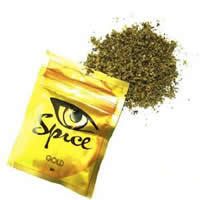With some fanfare last year the flailing New York Times started running essays on page two in which reporters comment on their own news stories. On October 31 the Times ran both a news story and a commentary by Medicine correspondent Gina Kolata on the subject of “Predatory Journals.” According to the news story,
“…Universities, colleges, even community colleges insist that faculty publish scholarly research, and the more papers the better. Academics and the schools they teach at rely on these publications to bolster their reputations, and with an oversupply of Ph.D.’s vying for jobs, careers hang in the balance.
Competition is fierce to get published in leading journals. But what about the overworked professors at less prestigious schools and community colleges, without big grants and state-of-the-art labs? How do they get ahead?
As it turns out, many of their articles are appearing in “journals” that will publish almost anything, for fees that can range into the hundreds of dollars per paper. These publications often are called predatory journals, on the assumption that well-meaning academics are duped into working with them — tricked by flattering emails from the journals inviting them to submit a paper or fooled by a name that sounded like a journal they knew.
But it’s increasingly clear that many academics know exactly what they’re getting into, which explains why these journals have proliferated despite wide criticism. The relationship is less predator and prey, some experts say, than a new and ugly symbiosis…
The number of such journals has exploded to more than 10,000 in recent years, with nearly as many predatory as legitimate ones. “Predatory publishing is becoming an organized industry,” wrote one group of critics in a paper in Nature.
Predatory journals have few expenses, since they do not seriously review papers that are submitted and they publish only online. They blast emails to academics, inviting them to publish. And the journals often advertise on their websites that they are indexed by Google Scholar. Often that is correct — but Google Scholar does not vet the journals it indexes.
The journals are giving rise to a wider ecosystem of pseudo science. For the academic who wants to add credentials to a résumé, for instance, publishers also hold meetings where, for a hefty fee, you can be listed as a presenter — whether you actually attend the meeting or not…
The following is from Kolata’s page 2 commentary. Odd that she leaves out advertising as a revenue source for the “traditional journals.”
“It was such an idealistic notion — information should be free. No one should have to pay to read an article in a scientific journal. But I should have expected that the law of unintended consequences would kick in…
… It’s expensive to publish a journal. You need an editorial staff and you need a coterie of trusted experts to review papers and advise on publication. The question is: Who pays for it all?
For traditional journals, subscribers do. Or you can pay what can be a hefty fee for a single paper. The problem is that the traditional model shuts out people who cannot afford what can be more than a hundred-dollar-a-year subscription. And if you are a serious scientist, you need more than one. The costs mount quickly. People in poor countries, who may not have access to libraries with subscriptions, were especially disadvantaged.
What happened, and what few expected, was the birth of open-access journals that will take just about any paper, for a fee. They don’t bother with the pesky expense of reviewers and they publish only online, so their costs are minimal. They send blandishing emails to scientists, inviting them to publish with them. There are now thousands of them, about as many as there are legitimate journals…
Along the way they earned the “predatory” epithet, because they were thought to be taking advantage of innocent scientists. But, I learned, predation is only a small part of the story. Many — probably most — academics who publish in these journals know exactly what they are doing. They are padding their résumés, taking advantage of the fact that colleges may not know if a journal is legitimate or not.
Here’s the little secret of most science journalism. We usually rely on experts who publish in the most prestigious journals for advice on the legitimacy of papers. I keep an extensive and ever growing list of researchers who are knowledgeable, honest, and tuned in to the latest research and its implications. If a paper looks interesting I will call on one or two of them and ask: “Is the work credible? Does it advance the field? Are there caveats I should know about?” And when we are looking for major advances or breaking news, we rely on papers from those prestigious journals.
I have changed one of my practices, though. I used to use Google Scholar when I was looking into an area that was new to me. But now that I know that Google Scholar does not vet the journals it lists, I avoid it.”
Retro Message: The scorn for “predatory journals” expressed by Gina Kolata* is analogous to the scorn for “Fake News” expressed by the Times and other establishment media. As if 75% or more of articles in the New York Times don’t emanate from government and corporate p.r. sources! Unfortunately, the distinction between high- and low-end journalism in the US is not authentic v. fake but sophisticated v. crude. And so it is with the scientific and medical journals. All the unsafe drugs that the FDA has had to withdraw from the market over the years received approvals based on studies published in prestigious, peer-reviewed journals.
Read a sampling of them and weep.
* The Times reporter is a sister of the late Earth First organizer Judi Bari. Aren’t families amazing? I met their parents at Highland Hospital after Judi had been badly injured by a bomb planted under the floorboards of her car. I drove Arthur and Ruth Bari back to the Oakland Marriott. If I’m remembering right, the mom was a mathematician at Johns Hopkins and the dad had given up his own academic aspirations in the 1930s and supported the family as a jeweler. He was soft-spoken and analytical. When I remarked on the attainments of Judi and Gina, he hastened to add that the third sister was no slouch. Like he was being protective of her even in absentia.





